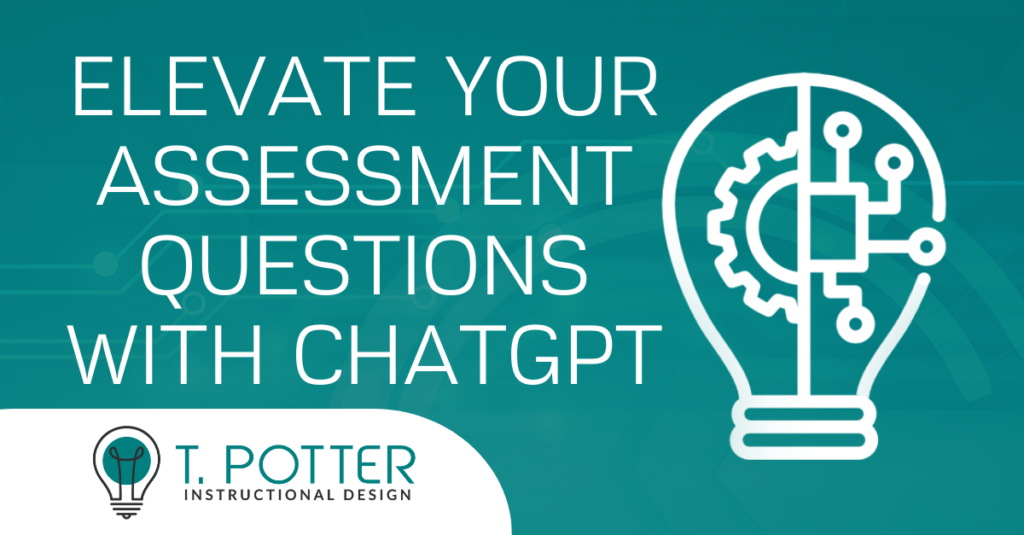Four Ways to Create Higher-Level Assessment Questions with ChatGPT
Assessment is crucial for giving educators insight into learners’ progress and measuring their learning outcomes. It’s also a step that is sometimes overlooked or underutilized because the process of creating and grading effective assessments is tedious and often difficult. ChatGPT is a helpful ally here, able to generate worksheets, assessments, and handouts and crank out multiple-choice, fill-in-the-blank, short-answer, and even essay questions.
However, traditional assessment approaches often struggle to evaluate higher-order thinking skills and encourage deep understanding effectively. ChatGPT comes through here, too, enabling educators to create scenario-based questions, develop well-crafted distractors for multiple-choice assessments, generate questions aligned with different levels of Bloom’s Taxonomy, and facilitate meaningful discussions based on provided text prompts.
Let’s look at four ways to use ChatGPT to elevate assessment design, engaging students in higher-level thinking and promoting deeper understanding.
1. Scenario-Based Questions
One thing ChatGPT does very well is create scenarios for assessment questions. The basic prompt for this is:
“I am writing an assessment for a ______ course on the topic of _____. Generate a scenario that I can use as the basis for assessment questions.”

You can get more specific about the type of questions you’re looking for; for example, “Generate a scenario that I can use as the basis for 5 multiple-choice assessment questions,” or “Generate a scenario to use as the basis for an essay on an exam.”
Here is what ChatGPT provided for my nursing ethics prompt:
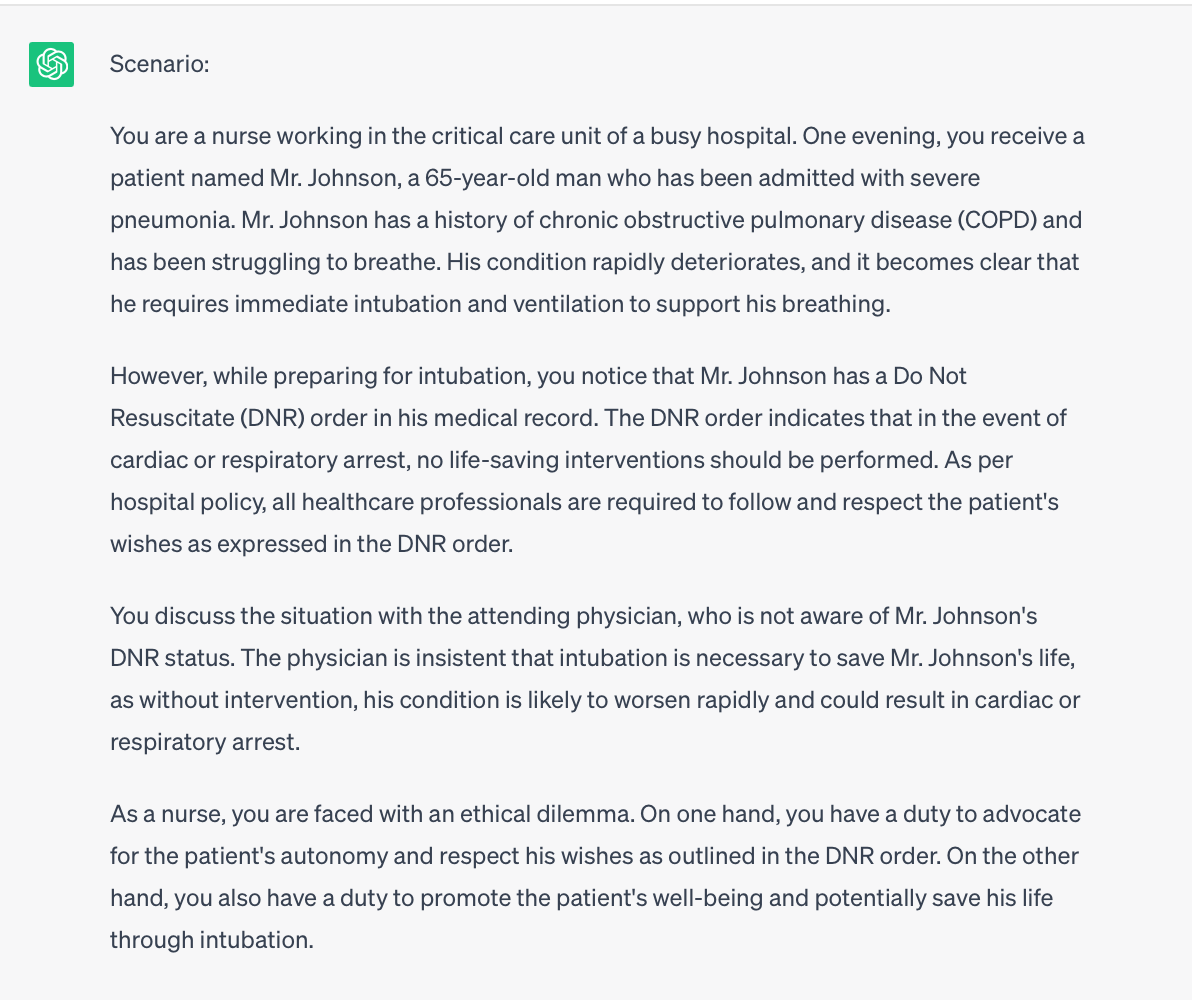
It also generated 10 open-ended questions about the scenario. I followed up by asking it for multiple-choice questions, and it responded with 10 of those as well. When I added to the scenario and asked it to create a specific multiple-choice question about how the nurse should respond in the situation I created, it provided what I was looking for.
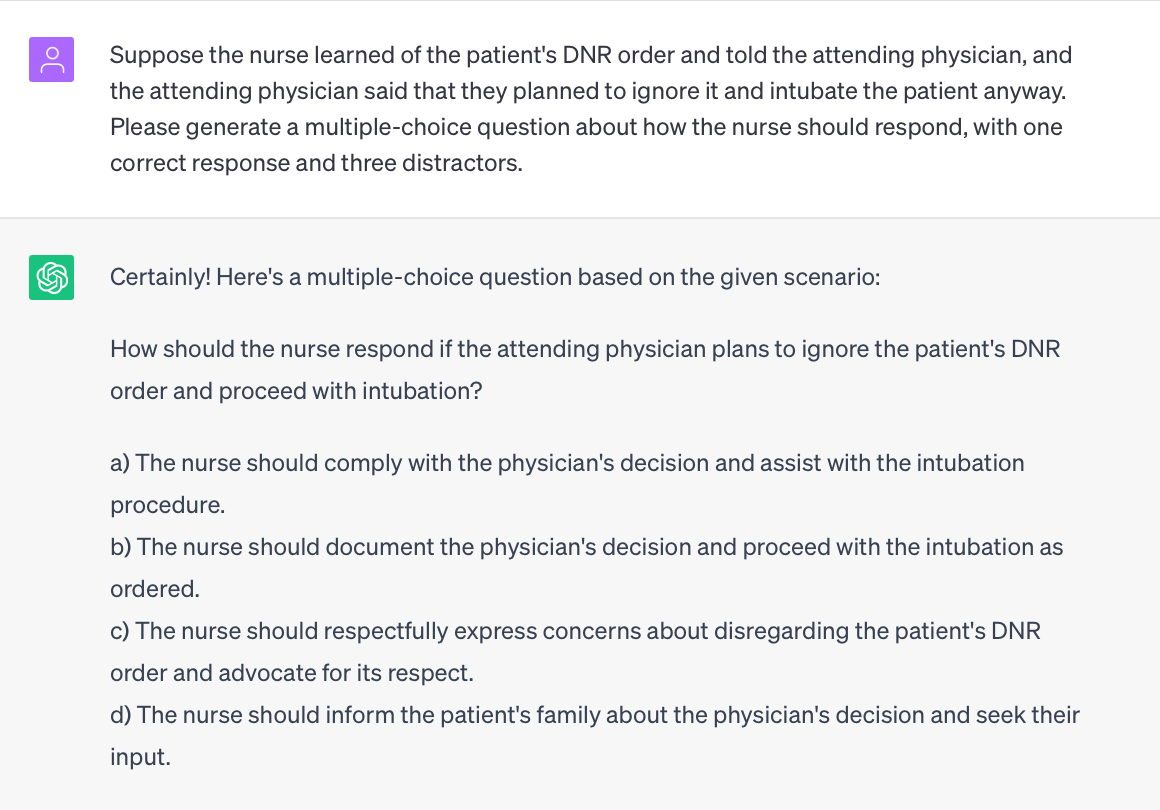
I’ve used that basic prompt structure to create scenarios for assessment questions about topics from psychological assessment and diagnosis to sustainable resource management to conflict resolution in the workplace. As straightforward use cases that save a lot of time go, generating example scenarios is one of my favorites.
To view the full exchange in ChatGPT, click here.
2. Distractors (Wrong Answers) for Multiple-Choice Questions
Another time-saving use for ChatGPT in creating assessments is coming up with the wrong answers for multiple-choice questions. You can plug in a question and the correct answer and ask ChatGPT to provide distractors, or you can also ask for it to create a correct answer.
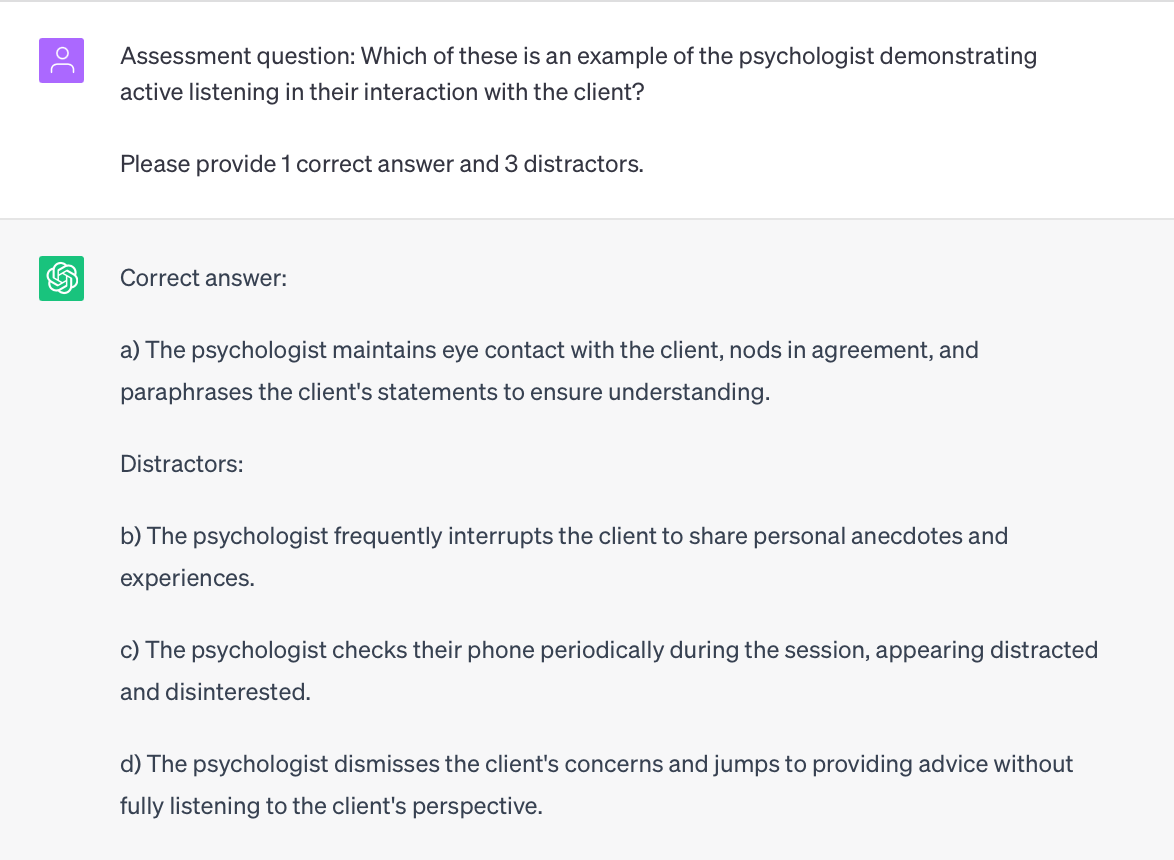
To view this exchange in ChatGPT, click here.
3. Higher-Order Questions
With the right prompt, ChatGPT can generate questions for different levels of Bloom’s taxonomy:

To view this exchange in ChatGPT, click here.
4. Questions About a Text
You can also paste in the text of an article, essay, or story and ask ChatGPT to generate discussion questions. I copied and pasted this article about the smoke from Ontario wildfires affecting cities on the East Coast and asked ChatGPT to generate discussion questions for a political science class.

It first responded with more general questions about the article, but when I asked it to tailor the questions for a political science class, it came through:
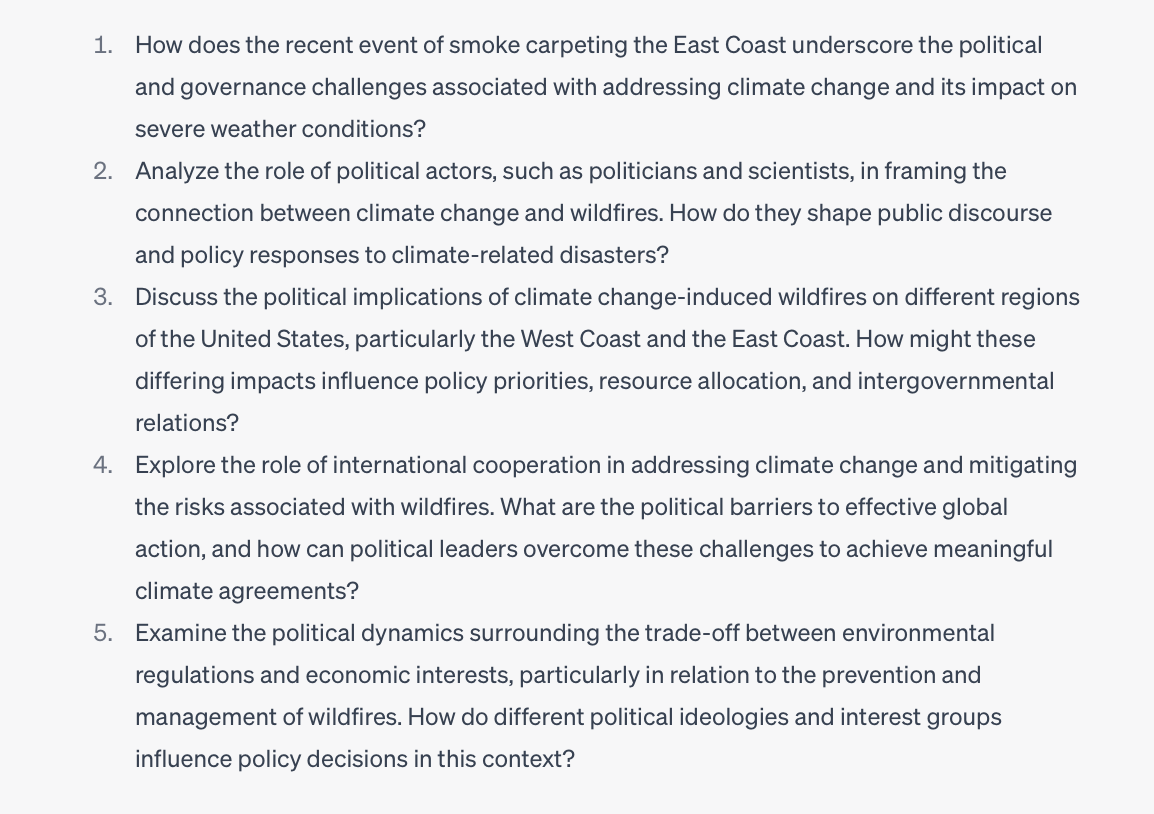
To view this in ChatGPT, click here.
One thing to note: You may run into a character limit when inputting text into ChatGPT. If this happens, paste in as much as will fit, tell ChatGPT you aren’t finished adding text, and continue to add sections of text in as many messages as it takes. Just know that by the time you’ve entered it all, ChatGPT may need to be reminded of what you’re asking it to do.
ChatGPT offers educators a valuable tool for enhancing assessment practices. By utilizing ChatGPT, educators can create scenario-based questions, develop well-crafted distractors for multiple-choice assessments, generate questions aligned with Bloom’s Taxonomy, and facilitate thoughtful discussions based on provided text prompts. Embracing ChatGPT as part of assessment design can empower educators to foster higher-level thinking and deeper understanding among students.
Fill out the form below to download our pdf tip sheet for using ChatGPT to create higher-order assessment questions!
Abi Bechtel is a writer, educator, and ChatGPT enthusiast. They have an MFA in Creative Writing from the Northeast Ohio MFA program through the University of Akron, and they just think generative AI is neat.

